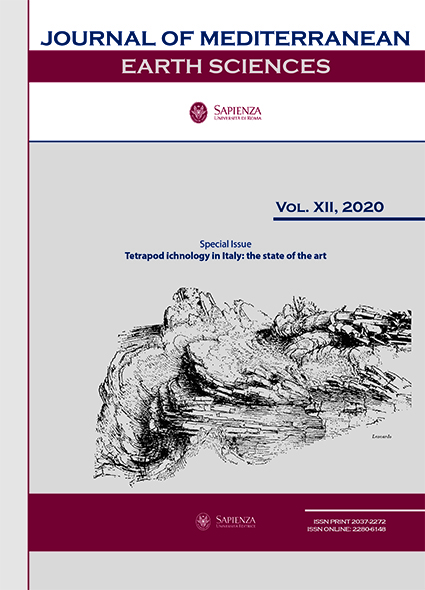The Carboniferous tetrapod ichnoassociation from Italy
DOI:
https://doi.org/10.3304/jmes.2020.16871Abstract
The tetrapod footprints from the Carboniferous (Pennsylvanian) of Italy come from the late Moscovian San Giorgio Formation of Sardinia and the early Ghzelian Corona Formation of the Carnian Alps. They include exclusively anamniote tracks: the ichnogenera Batrachichnus and Limnopus and tetrapod tracks indet. similar to Matthewichnus. The occurrence of anamniote tracks may have a marked palaeoecological meaning, since these tetrapods were tied to water for reproduction. These tracks represent the oldest record of tetrapods from Italy (either from trace fossils and skeletons) and the oldest Italian record of these ichnogenera. Despite the fragmentary material and the few known localities, the Pennsylvanian of Italy has a noteworthy potential for further prospecting, because of the relatively good preservation and the stratigraphy of the track-bearing formations. The Italian ichnoassociation could be the key for the understanding of the Notalacerta and Dromopus footprint biochrons in the Carboniferous of W Europe, which is less extensively known than the North American record.
Downloads
Published
How to Cite
Issue
Section
License
The submission has not been previously published, nor is it before another journal for consideration (or an explanation has been provided in Comments to the Editor).


